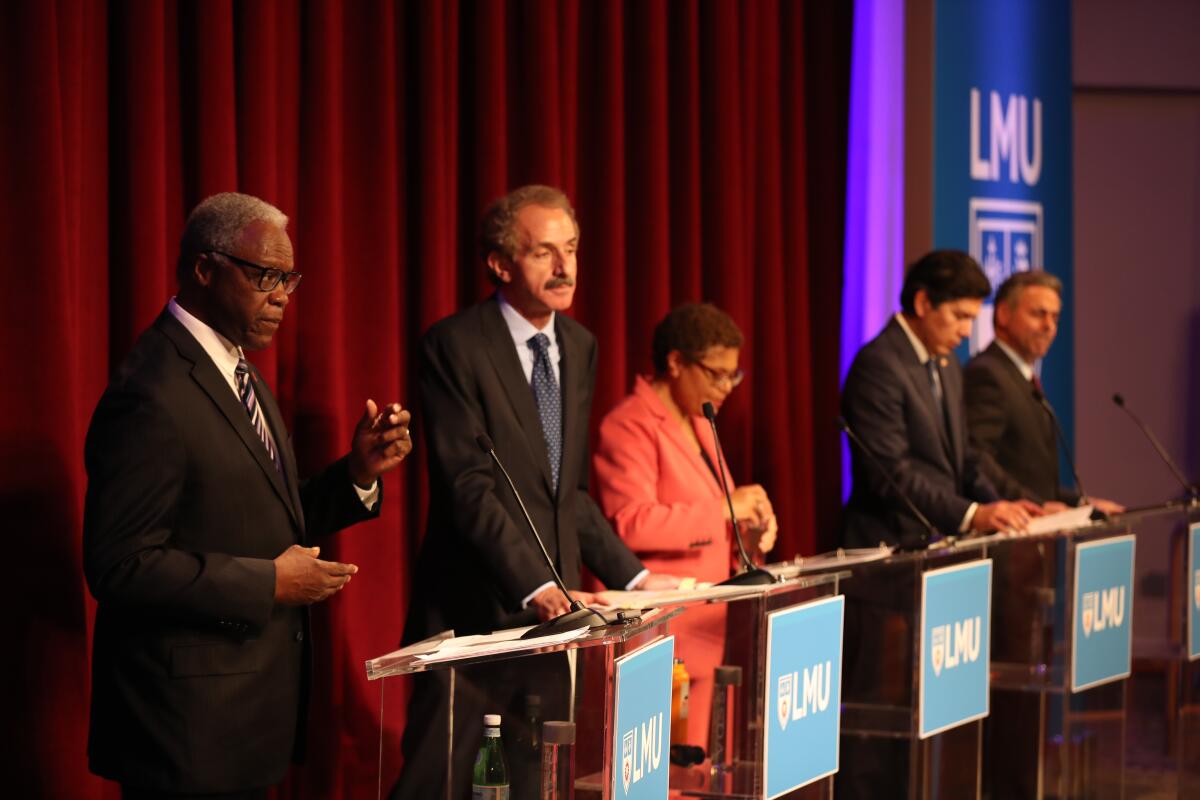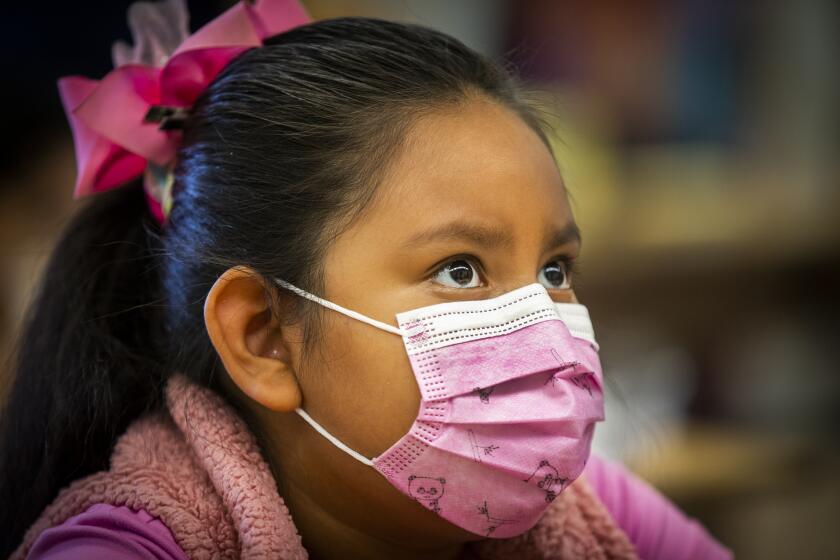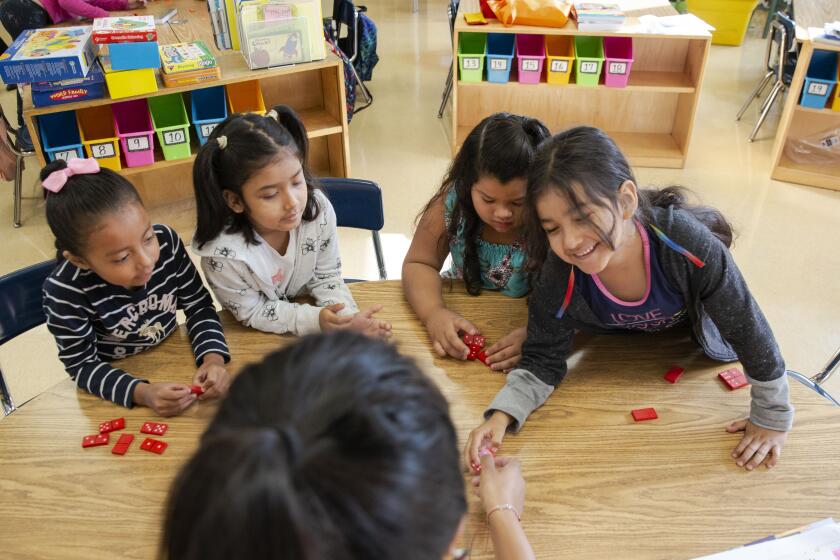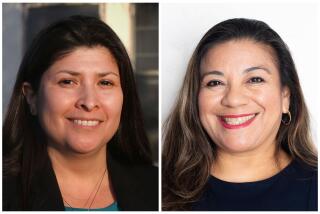Editorial: Hey, L.A. mayoral candidates, start talking about the schools

- Share via
Homelessness, COVID-19 and crime are naturally among the top issues in the race for Los Angeles’ next mayor. But these topics have eclipsed others that are just as crucial, including and especially the schools.
Yes, we know that in L.A., the mayor has no authority over the school district, and past attempts at mayoral involvement were fraught. For one thing, L.A. Unified’s boundaries encompass other cities. And, unlike other states, the California Constitution clearly spells out the separate powers of schools and municipal government. Still, a mayor has both a bully pulpit and the ability to make meaningful contributions to the education of the city’s children. A recent telephone poll commissioned by Great Public Schools Now, a pro-charter school nonprofit, found that 59% of L.A. voters want the mayor to take a more active role in schools.
This isn’t to say mayoral candidates should advocate for the schools takeover that former Mayor Antonio Villaraigosa sought in 2006. Though unsuccessful in gaining real authority, he influenced the composition of the school board in ways that gave it a needed sense of urgency but an overabundance of politicization that colored its actions for years. He took responsibility for the management of a handful of schools and did pretty well at it, improving campus culture, directing more students toward college and increasing test scores. Mayor Eric Garcetti played a key role in mediating the teacher strike of 2019 but otherwise was mostly hands-off.
With health concerns easing for now, this is a pivotal time for schools. Like many students nationwide, L.A.’s kids have lost academic ground, which wasn’t at an acceptable level before the pandemic. They also are suffering the emotional aftershocks of a frightening, uncertain and often depressing year-plus in lockdown at home.
Some education factions insist that students didn’t suffer academically last year. This rosy view can only evade accountability and hurt kids.
The district currently has a school board that is more responsive to student needs than the one Villaraigosa confronted 16 years ago, and old arguments about charter schools that once divided the district have become, well, old. It’s clear now that many charters have done good work at raising academic standards as well as graduation rates and have challenged the district to improve academics and parental choice. But charter schools are neither saviors of public education nor the evil empire come to destroy it.
After a long period of unstable leadership — eight superintendents in 15 years — the district has a promising and perhaps more long-lasting new chief in Alberto M. Carvalho, who ran the Miami-Dade schools in Florida for 13 years and has major ambitions for L.A.’s students. Because of pandemic relief and a robust state budget, L.A. Unified has significantly more money to spend on students as well, though it can’t count on all that money long-term.
In other words, this is a time of both extraordinary need and extraordinary promise that calls for leadership from a mayor who puts the schools toward the top of the municipal agenda.
There also has been greater acknowledgment that so-called school reform of pre-pandemic days, that fixed almost all blame for low academic performance on schools and teachers, was too narrow. Children who face food and housing insecurity, whose health needs are unmet and whose families are deeply stressed struggle to achieve in schools. That doesn’t absolve the schools of responsibility, but requires a more holistic approach. All the more reason for a mayor to be involved.
The candidates should outline how, as mayor, they would address serious issues facing the city’s school-aged children. We asked Carvalho for his thoughts on how a mayor could help, and several of his ideas are included below.
For starters, safe passage to and from school, which has been a problem for more than two decades. Too many students must walk along streets where they have been harassed or even robbed. They may feel safe at school but dread the walk home.
Want to cut down on absenteeism? Work with the Metropolitan Transportation Authority as an advocate for beefing up municipal busing along some of the major school routes with stops at the campuses so students don’t have to walk down potentially threatening streets. Have city departments work with schools and surrounding neighborhoods to determine their needs, which could include additional police or traffic safety officers and crossing guards along selected streets and near schools around the beginning and end of the school day.
Lower birth rates in California mean fewer students. School districts see this as a problem, but it could be an advantage.
Villaraigosa made big promises along those lines, even staging a much-ballyhooed press event in 2007 in which he rode a bus to Santee Educational Complex to show off a new stop. But the effort fizzled out, new changes to bus routes never materialized, and Villaraigosa stopped mentioning it.
One project Carvalho says he would like to work on with the mayor is creating full-service summer camps at city parks and pools, jointly operated by the district and city. Conversely, the district could open more of its campuses for wider community use of buildings and athletic fields while the city could use space on those campuses to house job, recreational and other services, making schools true neighborhood hubs. That also might attract more families to send their kids to L.A. Unified schools, perhaps slowing the decline in enrollment.
On a more ambitious scale, the school district owns tremendous amounts of unused land as well as increasingly underutilized school campuses and is interested in using it to build affordable housing for school employees and first responders. A joint development plan with the city could include housing for homeless people.
Carvalho said he also would appreciate the mayor’s help, in an arts-rich city, in obtaining free passes for students to attend art venues and cultural events, with some transportation provided.
How about a city program matching talented volunteers to help in the schools? They could be artists who share their creativity, professors who put on science shows or naturalists who teach students about the mountains they see from a distance but too rarely get to visit.
The next mayor should be an advocate for parents and students, calling out when things are going badly and offering solutions. Maybe he or she could even convince the school board to start holding at least some meetings at times when most working parents could actually attend.
That’s just a short list of the possibilities. The main thing is the next mayor can do more to support education in L.A. and the mayoral candidates need to start talking about how.
More to Read
A cure for the common opinion
Get thought-provoking perspectives with our weekly newsletter.
You may occasionally receive promotional content from the Los Angeles Times.












